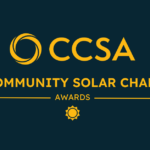With more and more family farms choosing community solar as a means for consistent and reliable income, a Saco family farm shares their experience about how a solar land lease helped save their farm and livelihood.
Published by the Portland Press Herald originally on February 13, 2021 by Linda Fenderson.
I married farmer John almost 25 years ago, and we’ve been running a farm stand in Saco ever since. John and his mother had previously run the farm stand, dating to when John brought soggy wet pumpkin seeds home in his pocket from school when he was very young.
John’s dad and Uncle Don ran a dairy farm here until the market fell out from under them. By the time I arrived, Uncle Don had died and John’s dad had only a few breeding cows left; they, too, were sold. The gardens, cut firewood and field harvests of hay have been the farm’s only source of income since then.
John’s parents aged and passed on right here at the farm (Dad died at 91 and John’s mother died two years later at the age of 92), compounding John’s and my responsibilities. There was just no time to take on the added responsibilities of farm animals here during this time.
But John and I have been proactive. We realized that as we aged, we would be putting those same burdensome responsibilities on our children, which we wanted to prevent, so we sought other sources of income that would complement our operations.
”Maine’s farms and traditional industries have struggled for so long, but new ideas like community solar have provided a path forward that can help solve our energy problems while providing a lifeline to our proud Maine traditions at the same time.
I had been looking for ideas online and liked the idea of a solar farm. Now, what got us excited about having a solar farm is that, besides providing low-cost electricity for local communities and a reasonable income for the farm, we will be allowed to use the fenced-in area to once again graze animals. Fencing is so expensive.
After doing further research and consulting a knowledgeable lawyer, we decided to partner with Blue Wave Solar to create a community solar array on our land. “Community solar” means that, though the panels are located on our land, others who don’t have the means or the space to install their own panels can benefit from the clean, renewable power generated on our farm.
This is the first year that we will have both the time and control of the farm to bring in farm animals, expand the gardens and develop the farm with the community. Because of this community solar project, we finally have the ability to farm this land the way we’ve always wanted to.
We have an emotional attachment to and livelihood tied up in this farm. So it’s not all about the money, because I know we could probably make more money selling the property off to the highest bidder for a residential development. For us, it’s more about having a sustainable future for all of us, for at some point in time in the future, the folks in this area just might need a local source of food and power to survive.
Sometimes the solutions to our problems are not the ones we expect. In our case, having a solar array on our farmland was the last thing we could have pictured ourselves doing 20 years ago. But we’re so happy that this opportunity presented itself. We can preserve our way of life, help our neighbors reduce their energy costs and contribute positively to our environment, all at the same time.
We are so thankful for the way things have worked out for our farm, and we’d encourage landowners and policymakers in Maine to look to our situation as an example. Maine’s farms and traditional industries have struggled for so long, but new ideas like community solar have provided a path forward that can help solve our energy problems while providing a lifeline to our proud Maine traditions at the same time.




